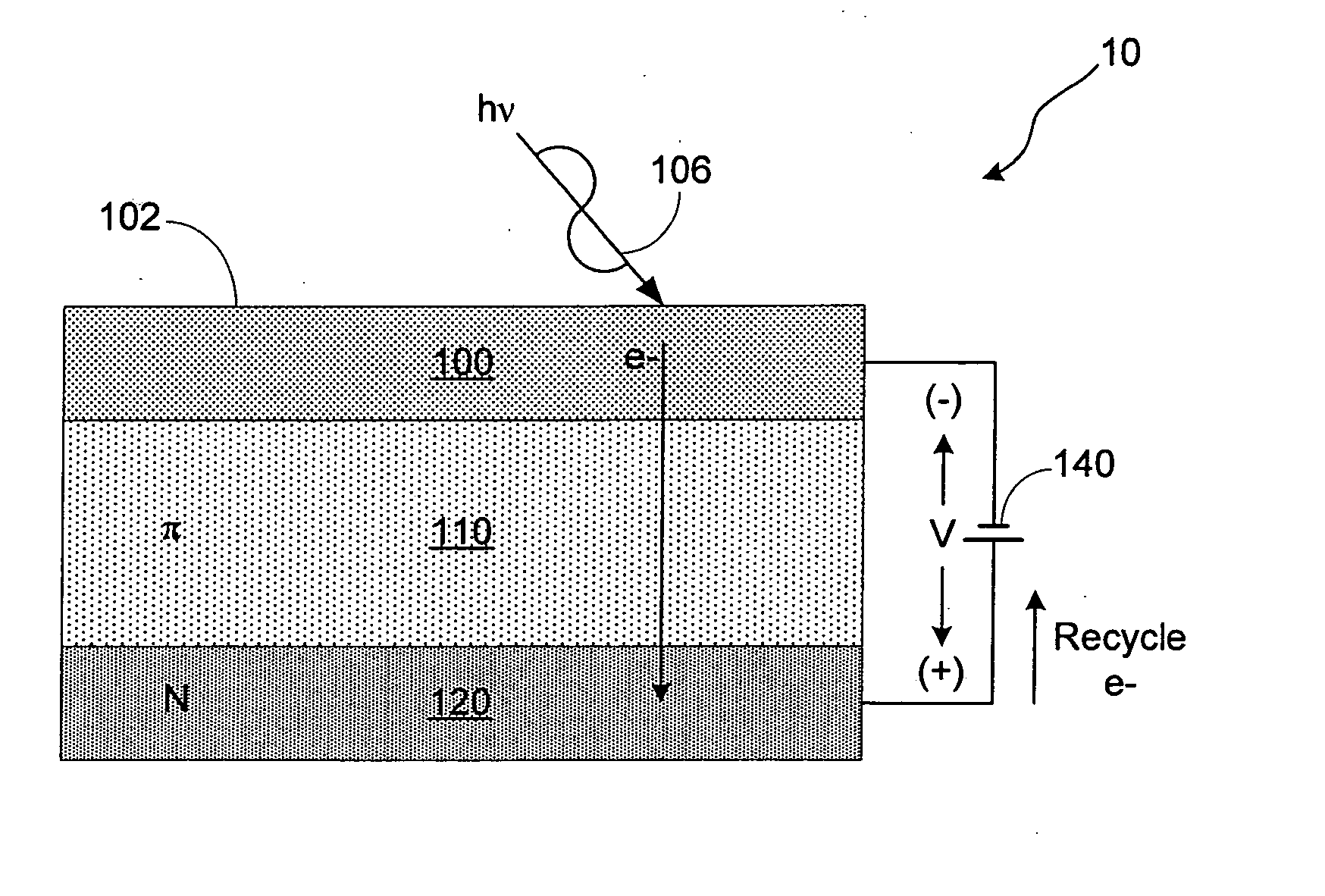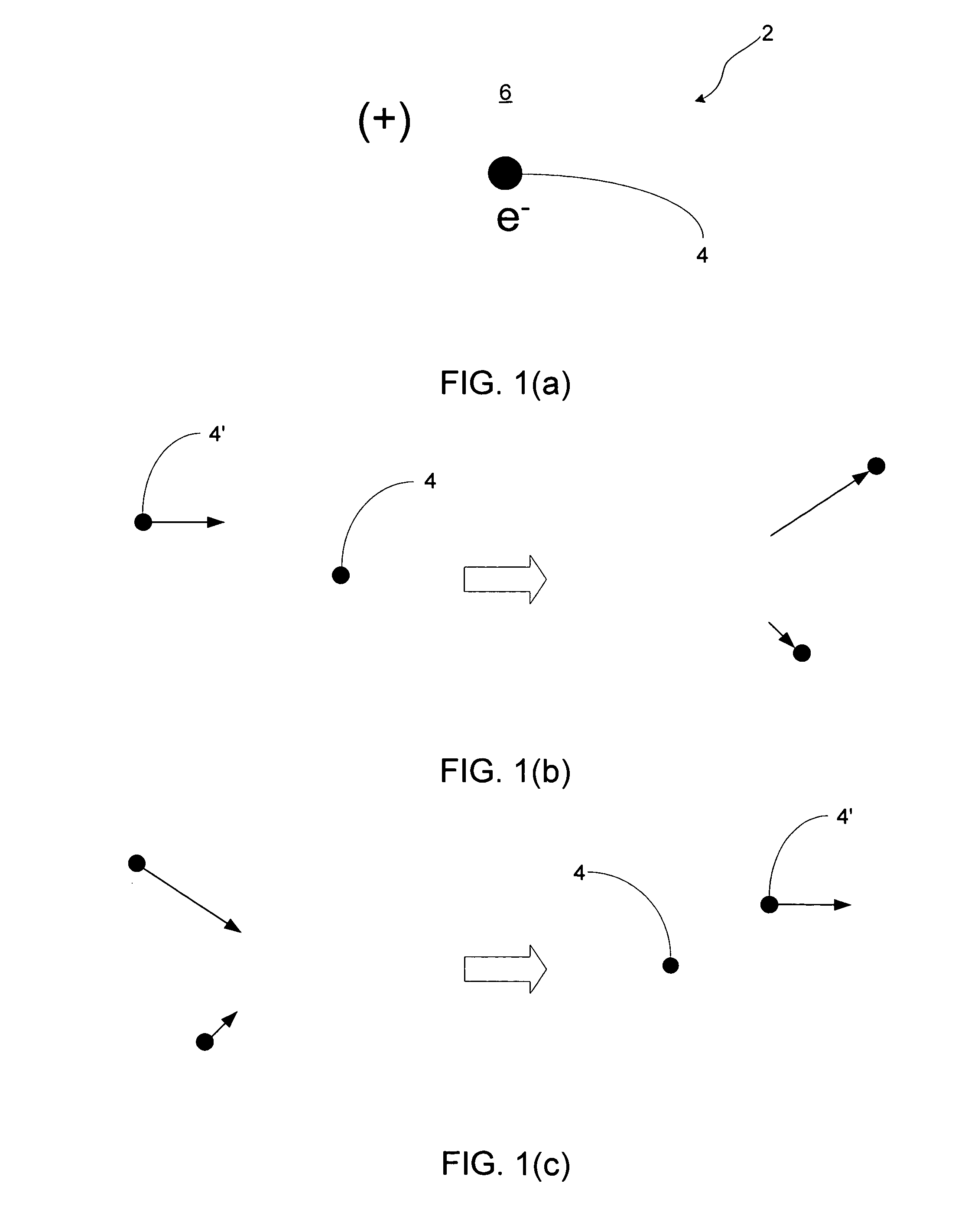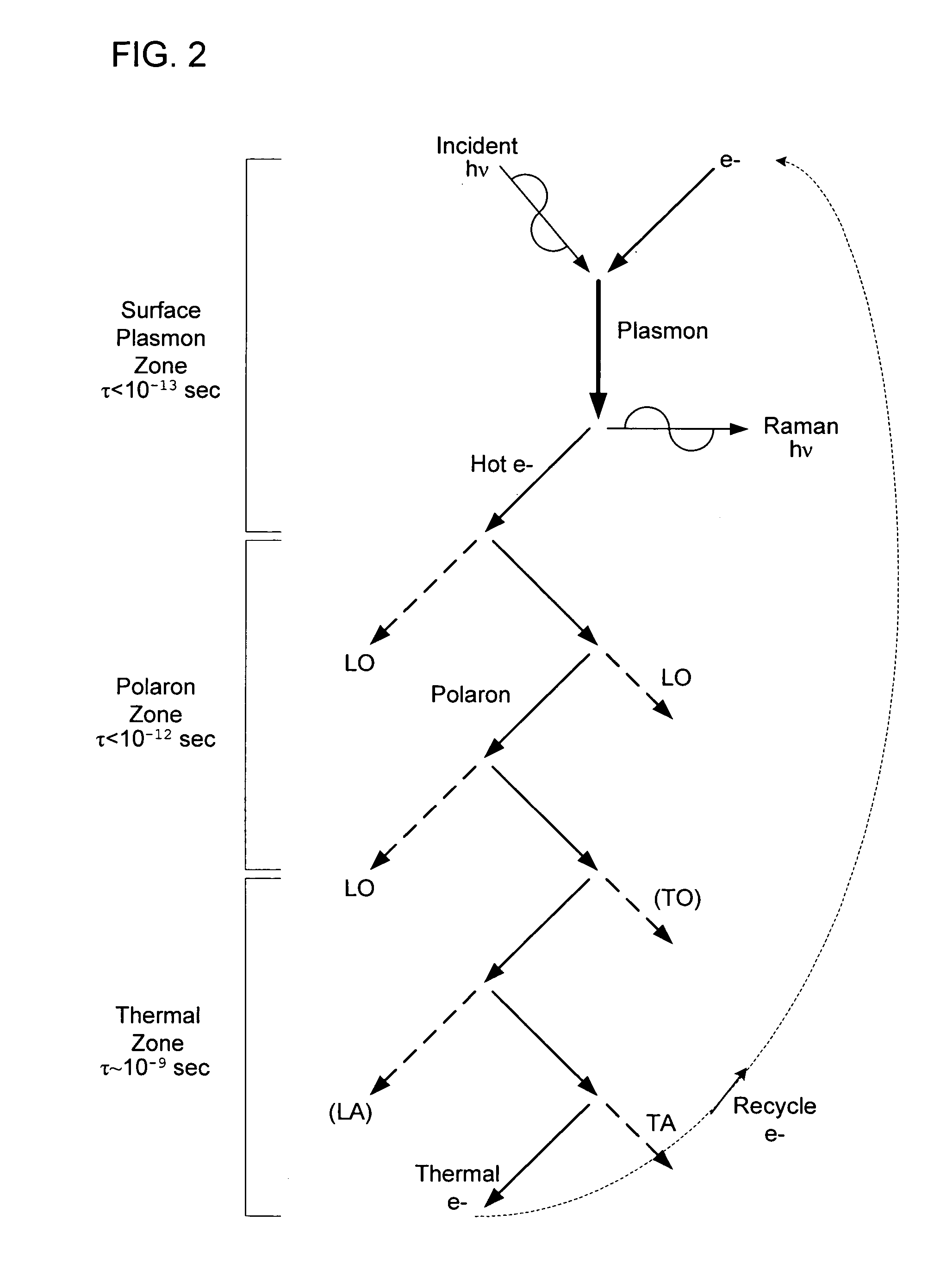Using a polaron interaction zone as an interface to integrate a plasmon layer and a semiconductor detector
a technology of interaction zone and interface, applied in the field of integrated plasmon detectors, can solve the problems of limited approach, difficult detection of lithium, and inability to fully integrate lithium, and achieve the effect of reducing the energy of electrons emitted
- Summary
- Abstract
- Description
- Claims
- Application Information
AI Technical Summary
Benefits of technology
Problems solved by technology
Method used
Image
Examples
Embodiment Construction
[0021] Referring to FIG. 2, a Feynman diagram depicts the decays scheme of a jellium or plasmon particle. An incident photon laser pulse that strikes a conductive mass of material (such as silver, gold, or other metal) excites free electrons to set up a plasmon, which then decays by emitting a high-energy electron and a Raman scattering photon that is reflected back from the mass. Thus, conservation of momentum dictates that the matching high-energy electron travels in a generally opposite direction from that of the Raman photon, and away from the surface. As the plasmon decays after the pulse, and accumulation underneath the surface of such high-energy “hot” electrons of energy between 0.04 eV and 12 eV begins to collapse towards the interior of the conductive material and proceed to interact with the ionic lattice atoms of this material. If this material is polar (that is, strongly ionic in nature), these high-energy electrons are quickly quenched. This stream of high-energy elect...
PUM
| Property | Measurement | Unit |
|---|---|---|
| plasmon frequencies | aaaaa | aaaaa |
| plasmon frequencies | aaaaa | aaaaa |
| energy | aaaaa | aaaaa |
Abstract
Description
Claims
Application Information
 Login to View More
Login to View More - R&D
- Intellectual Property
- Life Sciences
- Materials
- Tech Scout
- Unparalleled Data Quality
- Higher Quality Content
- 60% Fewer Hallucinations
Browse by: Latest US Patents, China's latest patents, Technical Efficacy Thesaurus, Application Domain, Technology Topic, Popular Technical Reports.
© 2025 PatSnap. All rights reserved.Legal|Privacy policy|Modern Slavery Act Transparency Statement|Sitemap|About US| Contact US: help@patsnap.com



